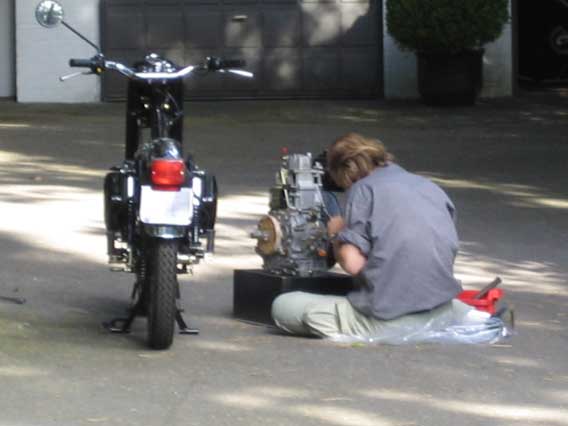
10 years have passed since I put this site online, and I think its time for an updated preface, so here we go:
Motorcycles of the simple layout shown below are now found all over the planet, in India, England, USA, France, Belgium, etc. Not of high quantity, just a couple enthusiasts, tree-huggers and freedom thinkers.
Biodiesel - although it was very popular - is no longer offered at gas-stations in Germany, instead government raised a mineral-oil-tax on all vegetable oil. Yes, the veggie oil you buy at the grocery store for your salad and meals now is more expensive because it is now taxed as a fuel!
So if you want a non-mineral fuel, you have to tank directly at the supermarket. At the same time the mineral diesel at the gas station is not pure mineral diesel anymore but thinned with 5..10% biodiesel.
Back in 1985 my first car was a 2nd hand VW Golf ! Diesel. It was a great car with a 5 liters / 100km consumption only and a virtually indestructable engine. Diesel was cheap, as well as the taxes for this car. Then there was one or two years, when I had to pay no taxes at all for the car, because it was Diesel powered and at that time diesel cars were considered to be 'green' because of their lower fuel consumption. Then again a couple years later government changed their minds and now diesel cars were very ungreen and taxes for my small car were raised to well above DEM 1000,- (Deutsche Mark) annually.
Riding on Salad Oil
A motorcycle enthusiast's guide to low speed, miniscule acceleration and tiny power, but fun fun fun :-)
New -> Riding on even less Salad-Oil -> The Altmann Combustion-Force-Turbine
Riding on Salad Oil / Vegetable Oil / Biodiesel / mineral Diesel / old motoroil / whatever ...
Ingredients: one stripped Royal-Enfield Bullet 500 motorcycle, add one 406cc, single cylinder, direct injection Yanmar L100 diesel engine (or chinese clone -> Kama KM186, Changfa, etc).
The traditional Indian way of doing things ground up:

Nice little engine (and cheap on ebay). This engine is the Kama KM186 delivered from Motorgeräte Fritsch for EUR 360,-
Later I found out, that this particular engine is probably not an original Kama engine (Yanmar clone), but a clone of a Kama, so to speak: a clone of a clone. Original Kama engines are said to have the Kama logo casted into the engine bottom.
I have been told that there are many companies who manufacture Yanmar clones. Estimates go from at least 50 manufacturers to 500 worldwide. Prices go from EUR 250,- for a stripped engine (no tank, no exhaust, no electric starter) up to EUR 2000,- for the original Yanmar L100.
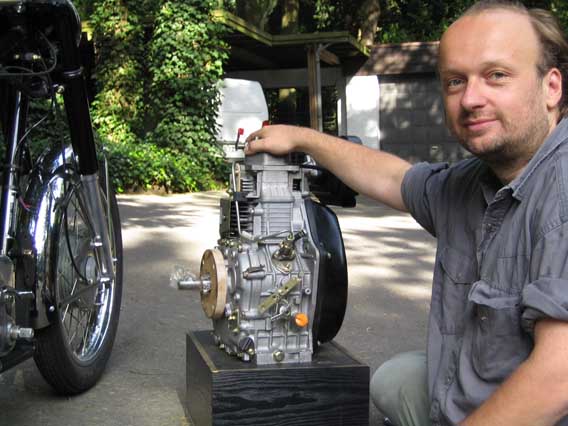
The motor mount (with a little (much) help from friends). No modifications to the original frame done, however, electric starter was dismissed. It turned out that it is very easy to kick-start the engine, once you know how to do it ;-)
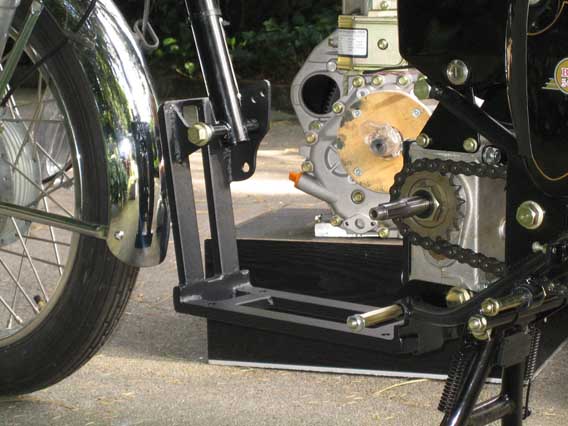
Fiddling with the pump (throttle) -lever. Once the engine is installed the pump lever is out of reach. Better do a good job here.
I did not do a good job. How could I ? I had no idea how the diesel works. So I had to loosen the engine several times, in order to modify the pump levers.
It works like this: There is a lower lever, which is connected directly to the injection pump (movement modifies injection volume). This lower lever is operated by the upper lever through a spring. The upper lever is moved by the throttle cable. Okay once again from the other direction: You pull throttle -> the upper lever moves and pulls the spring that is attached to me lover lever -> by pulling throttle you do nothing, but apply a FORCE to the injection lever. Inside the engine there is a flyweight, which applies a counterforce to the injection lever. This assembly acts as a engine speed regulator. The FORCE you apply by pulling throttle is the engine rpm you would like to achieve. When the actual rpm is low then the flyweight has low force so the injection lever moves and injection volume is increased -> engine accelerates until the flywheel counterforce is equal to the force you apply to the spring (by pulling throttle). Counterforce by flyweight decreases injection volume and this whole assembly will keep the rpm at a constant level. This is necessary as a diesel engine has no butterfly valve to limit air flow. This means that if you give the engine a fixed injection volume per revolution, it will either go out, or rocket through into self-destruction. I could not believe it, so I tried it out (by removing the flyweights), and it really happens. The diesel engine's speed regulation is essential.
The speed regulation can also act as a rev-limit. If you want to go faster, you have to modify the levers (-> spring attachement), so that you can apply a higher force to the injection lever. If you want to have a low idle, make sure that with throttle closed there is low spring force (as there will be low flyweight force with low rpm). If spring force is too high (or attachment is wrong), you cannot have a nice low idle.
It is perfectly okay, if you do not understand what I am talking about, and that sounds like complete nonsense. Just read it over, when your diesel-project-bike does not go faster than 60km/h, and you will know what I mean :-)
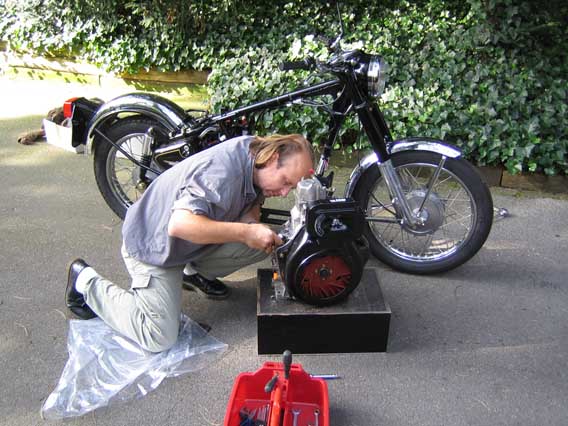
Motor-mount-to-transmission connection with hole to make place for pump lever. For fitting a Diesel engine to the Enfield tranny, you need to install a longer transmission mainshaft and the inner primary of the Diesel (Taurus) model. Parts were obtained from Sommer Motorradtechnik. Jochen Sommer was always friendly and helpful. Sprocket was later changed from 17 to 19 teeth.
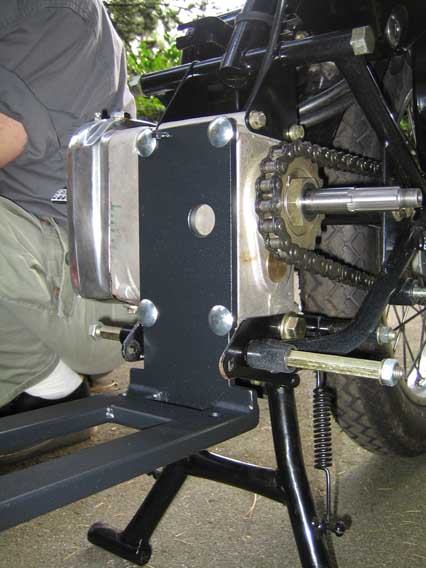
It fits, and its level and hey, I like the red impeller :-)
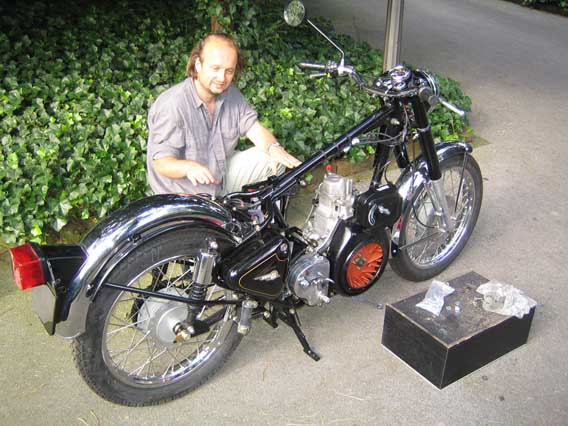
Looks almost original:
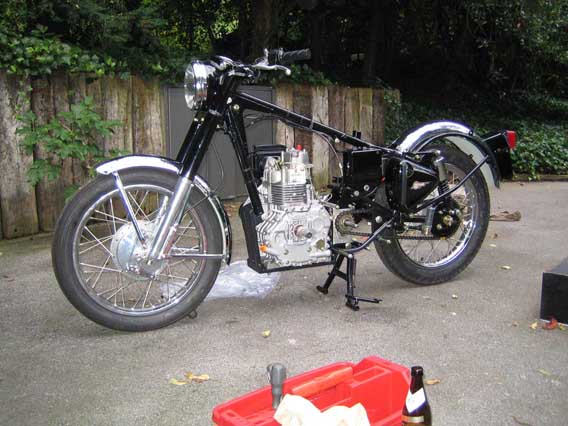
Wooden spacer to test connection to primary drive (spacer thickness -> 20mm):
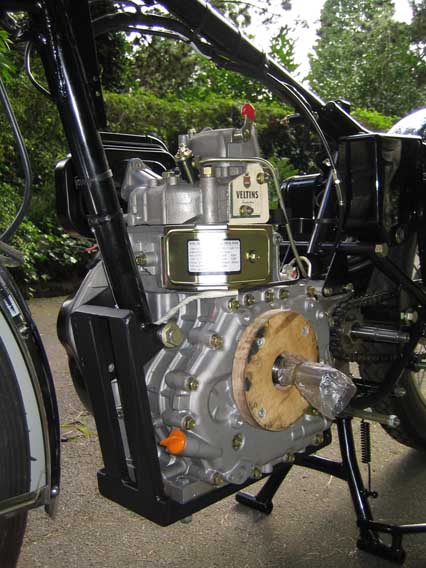
Wooden spacer replaced by steel spacer: Due to the very large feedback, here are simple drawings of the adapter-ring, motor-plate and tranny-plate.
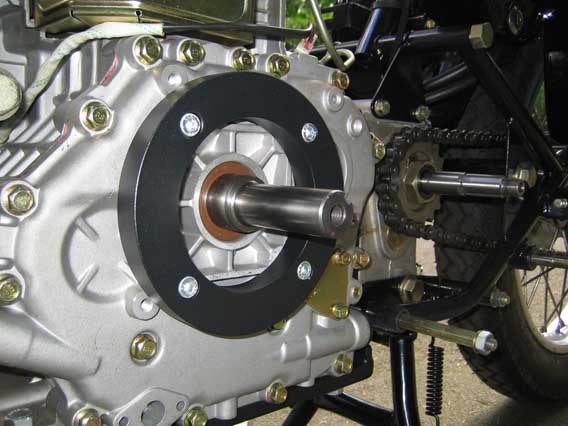
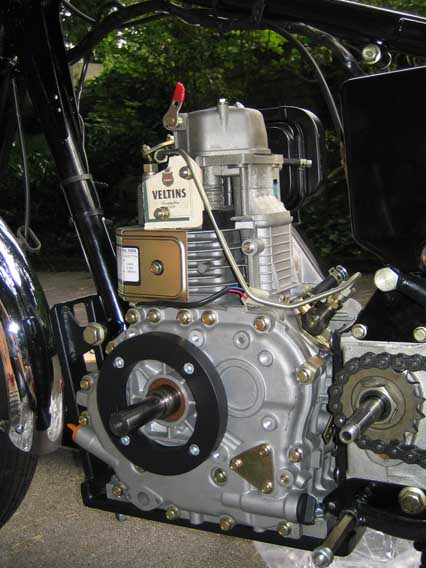
Fitting primary inner cover:
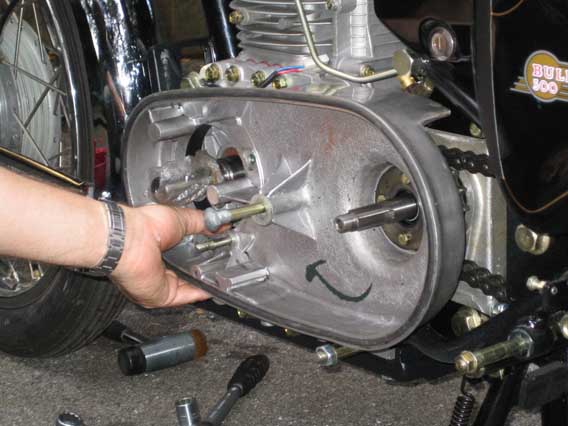
What you still need is a primary-chain-sprocket (not shown) that matches the shaft of the Kama-clone engine. I have ordered the sprocket from Maedler and it works very well.
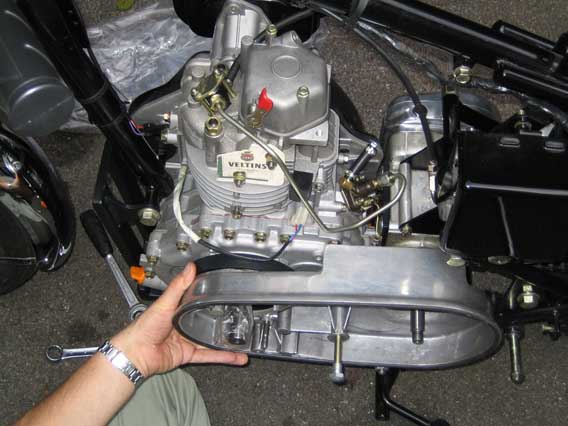
Old Porsche pipes for a new Salad-Oil exhaust:
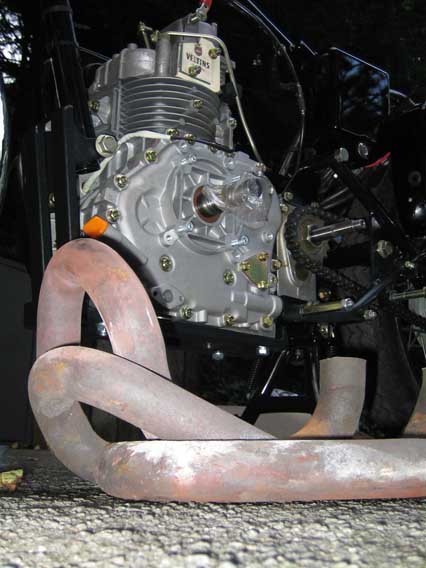
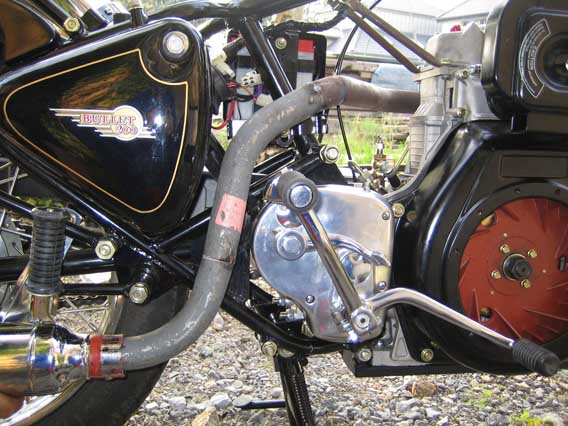
Roughly finished bike: Exhaust is a 80's HD Shovelhead muffler (chinese copy).
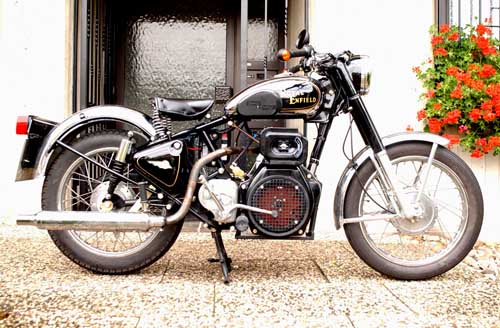
Problem: the regulator that came with the engine is too weak to power the lights and load the battery. Regulator voltage was too low, so I made my own 4-parts voltage regulator: You need a rectifier, zenerdiode, resistor and a darlington transistor. Here's the schematic.
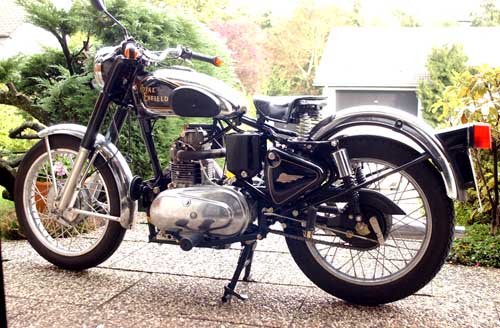
Top speed after 600km burn-in: 80km/h on level ground. Changed transmission sprocket from 17 to 19 teeth.
Changed lever spring attachment, now top speed is about 100km/h, wow that's enough for the Autobahn.
Fuel consumption: about 2 liters / 100km.
Changed injection pump stroke setting. Fuel consumption is now considerably below 2 liters / 100km. Very low smoke. Bike still goes 100km/h.
100% salad oil -> bad starting behaviour, white smoke. The bike has kick-start only and no glow-plug which can make starting on pure salad oil impossible when the engine is cold. However, also for this problem there's a solution: spray a small amount of brake cleaner into the airbox -> the engine will start at first kick and keep running on salad oil.
Water in Salad-Oil Emulsion (to make the stuff thinner) -> runs, starting behaviour as above. No long time tests performed by now.
3 parts salad oil with 1 part Diesel -> perfect starting.
Biodiesel -> perfect starting, great performance. Water in Biodiesel emulsion -> not yet tested, but is said to further reduce emissions.
9 parts salad oil with 1 part petrol -> engine starts and runs good. Not as good as with real biodiesel though. The amount of petrol in the veggie oil can be varied a bit and depends on your injection timing setting and the thickness of the salad-oil you are using. I think there may be a whole variety of mixes at your option, that may give satisfying results. The two main motivations are 1) to make the salad-oil thinner, so that the injector will be able to give a finer dispersion of the fuel, and 2) to lower the flame point to a degree, that the bike can be easily kickstarted.
Rode the bike over 3000 km by now mostly on biodiesel with no problems at all. When riding on biodiesel there is a decent smell of barbeque. I like that much better than stinking mineral diesel.
When riding on salad-oil or biodiesel you set free exactly the amount of CO2 that the plants have digested.
At biodieselcommunity.org you can learn how to make your own biodiesel at home.
John "Mac" McQuaid has made a very simple biodiesel processor which is powered by a Lister engine, which again runs on salad oil.
After a while I felt the bike had too much chrome. So I decided to powdercoat the fenders and complete exhaust in black (fine structure).
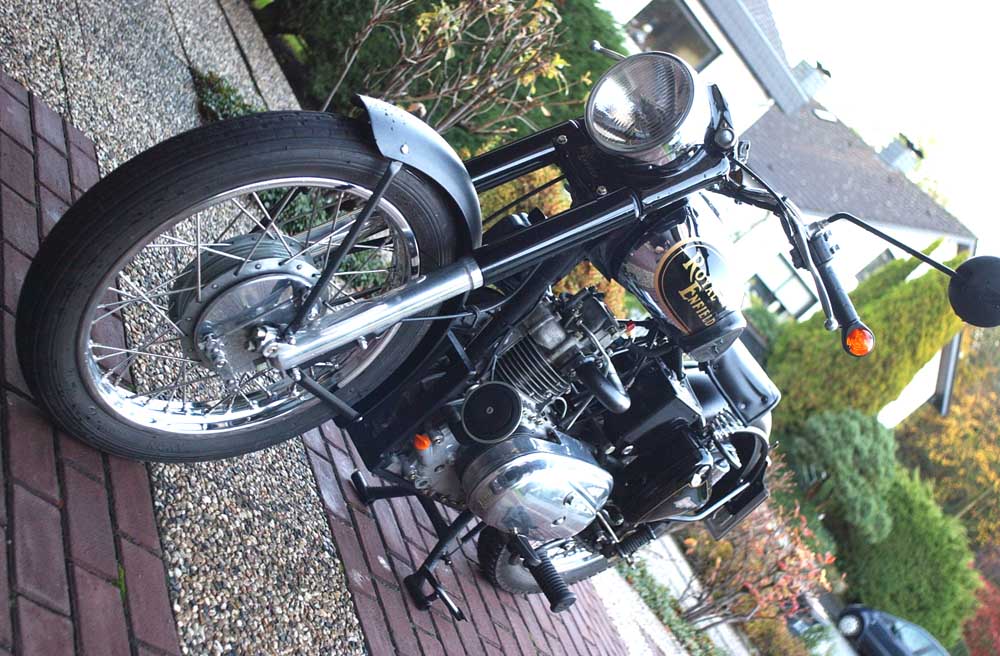
Professional powdercoating was done by bhp, Bernd Hassel Pulverlacktechnik. Bernd is also the inventor of the famous "Tropfnix" beer keg stand.
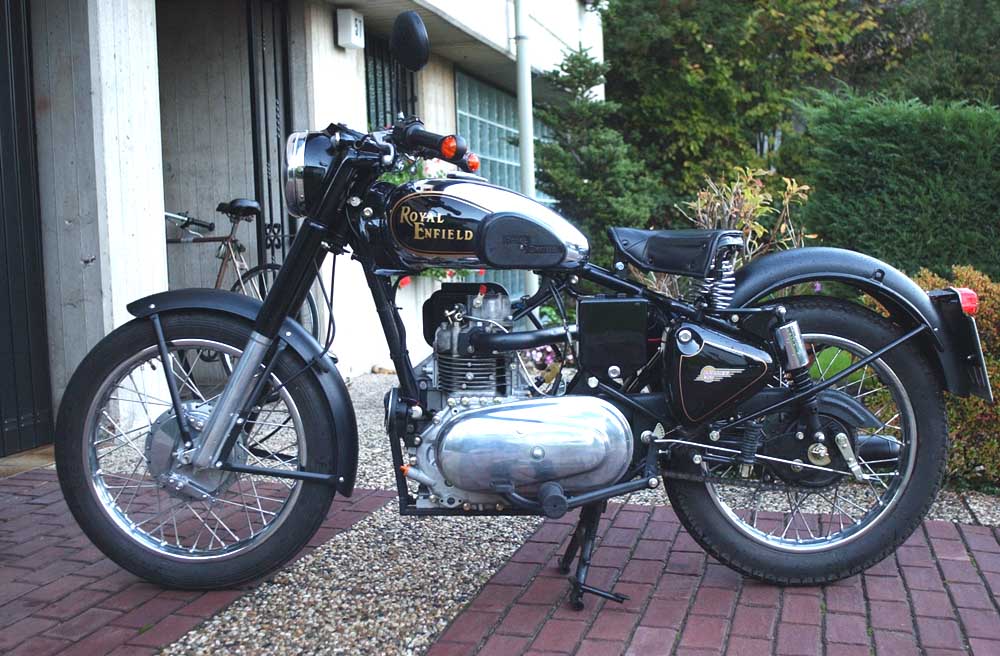
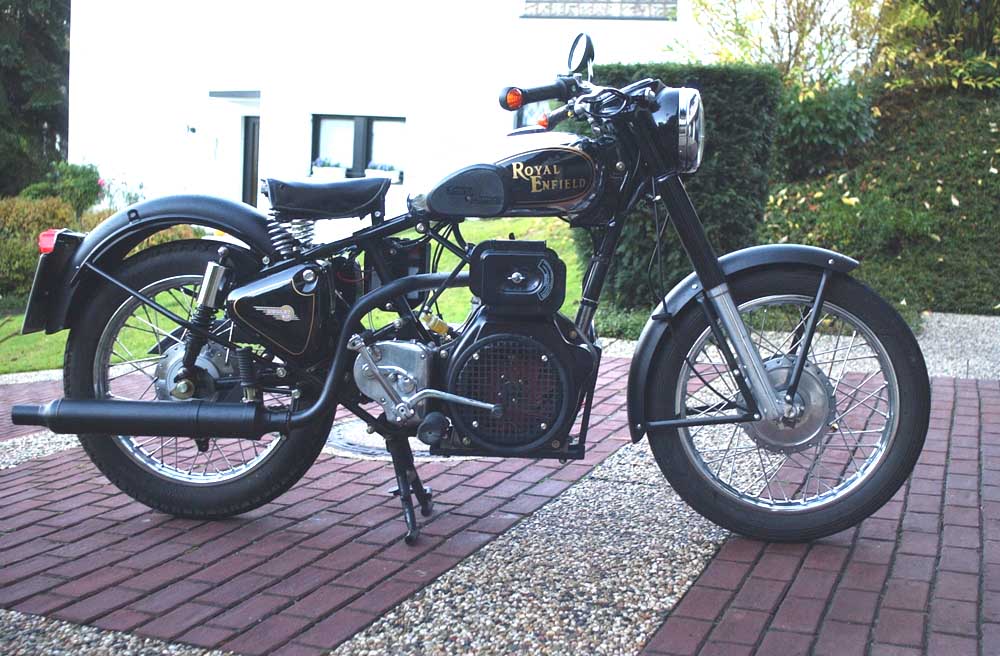
Take a look at Andrew's new Diesel-Enfield:
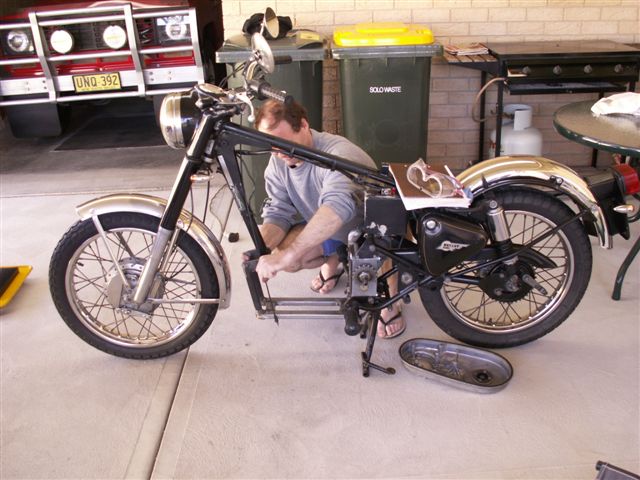
I like the exhaust he had made:
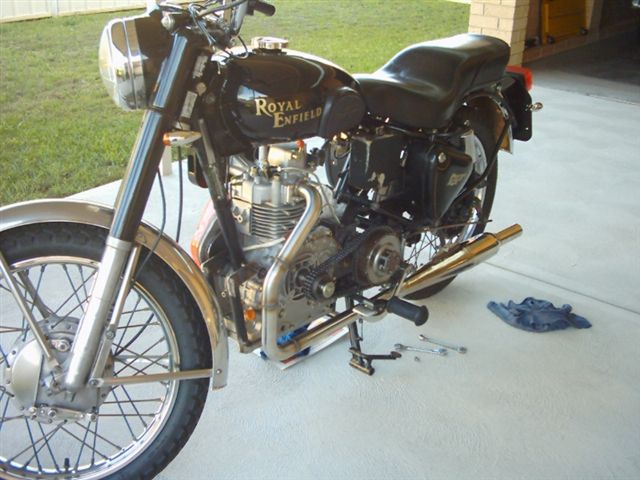
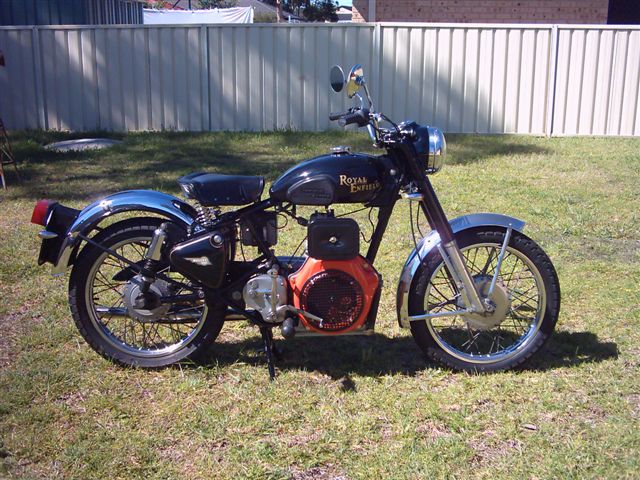
Check out Tim Jensen's bike in front of Mount Rushmore. For me this one of the most beautiful pictures ever taken ...
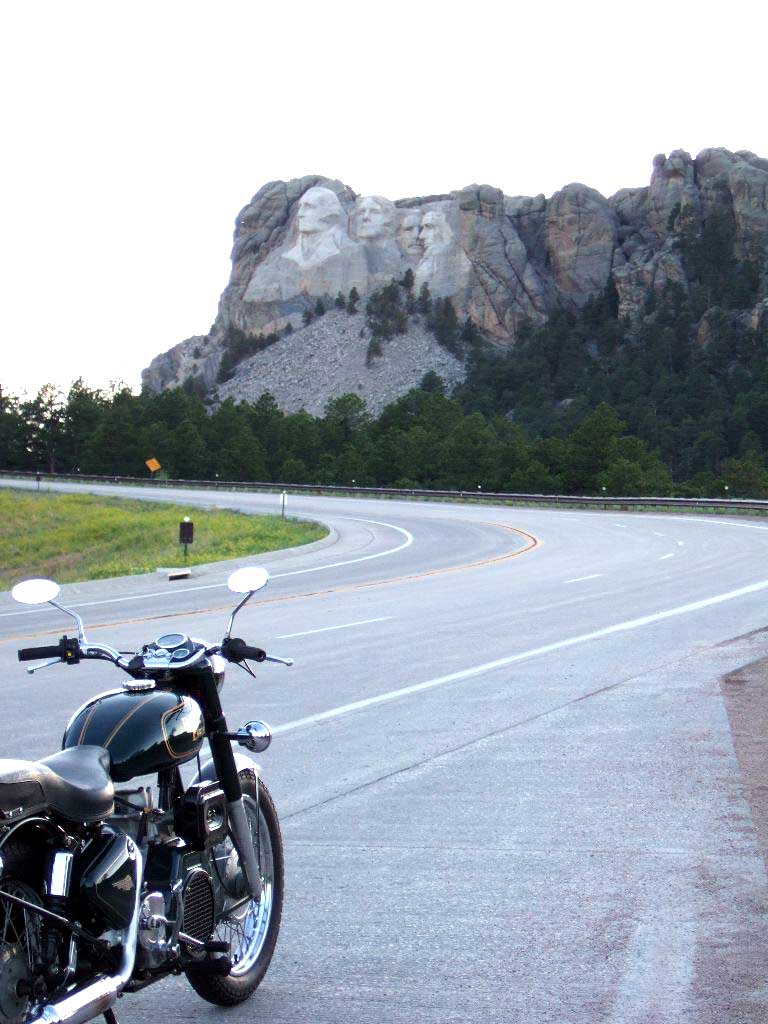
This adaption is special as Heiko managed to install the Yanmar / Kama / Changfa / Yangke / Rotek engine without a longer transmission shaft and using the original inner primary from the gasoline Bullet.
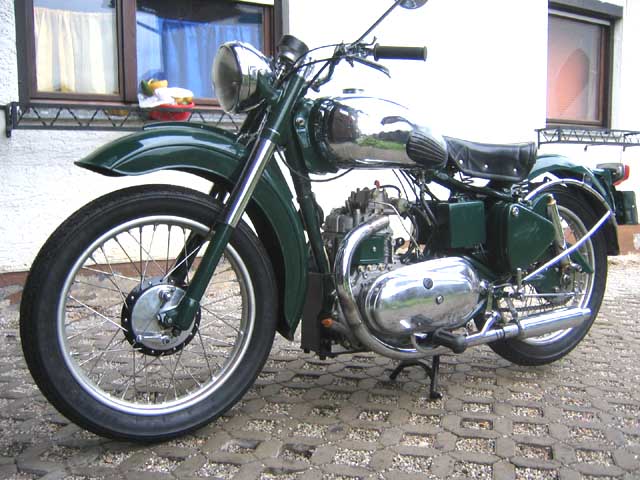
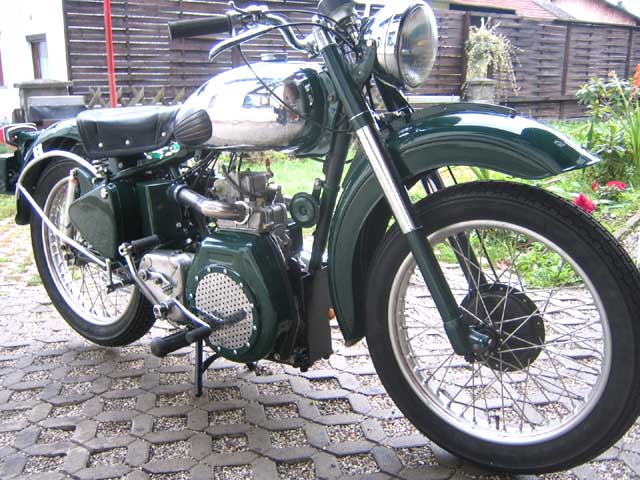
Stay tuned for more ...
ALTMANN MICRO MACHINES ... Dipl.-Ing. Charles Altmann ... Am Muehlenbusch 57 ...42781 Haan ...Germany
phone +49-2129-54260 ... fax +49-2129-342555 ... email